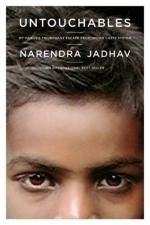
|
| Name: _________________________ | Period: ___________________ |
This test consists of 5 multiple choice questions, 5 short answer questions, and 10 short essay questions.
Multiple Choice Questions
1. In "Chapter Twenty-Six: Turning Point and the Resurgence of Caste," what does Wilkerson say political scientists call "the belief that undeserving groups are getting ahead while your group is left behind" (325)?
(a) Status threat.
(b) Collective narcissism.
(c) Racialized economics.
(d) Caste loyalty.
2. In "Chapter Twenty-Seven: The Symbols of Caste," what peaceful demonstrator is deliberately run over and killed in Charlottesville, Virginia?
(a) Mitch Landrieu.
(b) Nigel Dunkley.
(c) Wesley Norris.
(d) Heather Heyer.
3. In "Chapter Twenty: The Inevitable Narcissism of Caste," what is the rhetorical purpose of Wilkerson's anecdote about speaking with her colleague about the difficulty of managing her disabled mother's care?
(a) It establishes Wilkerson's credibility to discuss the topic of collective narcissism.
(b) It offers the reader a humorous release of tension between two upsetting passages.
(c) It is an example of the distaste the dominant caste feels about being compared to members of the lowest caste.
(d) It draws a parallel between the Indian and American systems that supports Wilkerson's general point that America has a caste system.
4. In "Chapter Twenty-Four: Cortisol, Telomeres, and the Lethality of Caste," how many years does Wilkerson say separate the average life expectancy of White college graduates from that of Black college graduates?
(a) 4.
(b) 2.
(c) 10.
(d) 8.
5. In "Chapter Twenty: The Inevitable Narcissism of Caste," what does Wilkerson say is the cause of phenomena like an Iranian immigrant feeling moved to point out the existence of a blond-haired child somewhere in the family?
(a) Immigrants know that this is what white people want to hear.
(b) Each caste wants to stress its proximity to the dominant caste.
(c) Immigrants often arrive from countries with systemic racism of their own.
(d) Each caste is trying to distance itself from the lowest caste.
Short Answer Questions
1. In "Chapter Nineteen: The Euphoria of Hate," what film footage does Wilkerson describe?
2. In "Chapter Twenty-Two: The Stockholm Syndrome and the Survival of the Subordinate Class," Wilkerson says that marginalized people have to learn the "idiosyncrasies" of the ruling class. In this content, what is the best definition of "idiosyncrasy"?
3. In "Chapter Eleven: Dominant Group Status Threat and the Precarity of the Highest Rung," what does Wilkerson argue the lowest-status Whites have been given in the place of real security and opportunity?
4. In "Chapter Twenty-Seven: The Symbols of Caste," Wilkerson mentions two films that "fed the country and the world the Confederate version of the war" (335.) One is Birth of a Nation. What is the other?
5. In "Chapter Twenty-Two: The Stockholm Syndrome and the Survival of the Subordinate Class," what does the Black bailiff do when the white killer of a Black man begins crying about her conviction?
Short Essay Questions
1. In"Chapter Twenty: The Inevitable Narcissism of Caste," to what does Wilkerson compare the American habit of asking where people's families are from, and why?
2. In "Chapter Twenty-Five: A Change in the Script," why does Wilkerson say that Barack Obama's parentage helped in his election bid?
3. In "Chapter Twenty-Five: A Change in the Script," how does Wilkerson say Civil War politics seem to still influence American voting?
4. In "Chapter Twenty-Four: Cortisol, Telomeres, and the Lethality of Caste," what evidence is there that Blacks in America are under stress from the society around them?
5. Explain what Erich Fromm says about group narcissism, as described by Wilkerson in "Chapter Twenty: The Inevitable Narcissism of Caste."
6. In "Chapter Twenty-Seven: The Symbols of Caste," why does Wilkerson quote the vice president of the Confederacy's statement about the purpose of the Confederacy?
7. In "Chapter Sixteen: Last Place Anxiety: Packed in a Flooding Basement," what idea does Wilkerson use the story of Freddie Gray to illustrate?
8. What is "dominant group status threat" and how does Wilkerson link it to mortality statistics in "Chapter Eleven: Dominant Group Status Threat and the Precarity of the Highest Rung"?
9. In "Chapter Twenty-Six: Turning Point and the Resurgence of Caste," whom does Wilkerson call the most loyal voters of the Republican Party, and how does the party treat them, according to her?
10. In "Chapter Twelve: A Scapegoat to Bear the Sins of the World," what is the rhetorical purpose of including the anecdote about the murder of Carol DiMaiti?
|
This section contains 1,312 words (approx. 5 pages at 300 words per page) |

|




